
Designing a hellstrip is often an afterthought, something considered once the rest of the garden is complete, which is such a shame!
When visually connected to the rest of the garden, a well-designed hellstrip adds cohesion to the overall design, and can act as an eye-popping ‘welcome mat.’
What exactly is a hellstrip, anyway?

Also known as a sidewalk strip, planting strip, or meridian, the term ‘hellstrip’ is the skinny, oddly-shaped area between the sidewalk and the street.
This area has so much going against it that it’s hard to imagine anything thriving here, which is why it’s often ignored.
One reason is that due to years of neglect and compaction, this rectangular patch of dirt typically contains little to no nutrients and has the consistency of cured cement.

Additionally, this area is surrounded by the hottest, heat-reflecting surfaces in the landscape – asphalt from the street and concrete from the sidewalk.
Another common problem is enormous trees often planted in these strips, with giant roots making it impossible to dig holes.
The roots also create a hostile planting environment for any little plants you manage to plant (click here for my recent post about planting around established tree roots.)
As if it couldn’t get worse, road salt is routinely used in northern climates and ends up in this part of the garden, making it even more challenging for plants to survive.
Feeling defeated, gardeners give up and either 1) plant water-thirsty lawns or 2) cover the area with ankle-twisting river rocks.
Why Little Hellstrip Lawns Don’t Make Sense

Wasted Water
When planted with lawn, the shape of these rectangular strips makes it inefficient (and expensive) to irrigate, resulting in wasted water on the sidewalk and street.
In California’s climate (where water is such a precious commodity), planting a lawn where it’ll never truly be enjoyed doesn’t make sense.

Mailboxes & Fire Hydrants
Another reason hellstrip lawns are a poor choice is it’s challenging to mow around mailboxes or fire hydrants that often share this space.
No thanks.
Why River Rocks don’t make sense, either!

I also see a lot of river rocks thrown down as a no-lawn, no-hassle solution.
While they’re definitely low-maintenance, they’re also ankle-twisters for poor, unsuspecting souls who try to walk across the hellstrip.
Think about your poor visitors who pull up along the curb and have to step out of their car (especially if they’re wearing sandals or high heels!)
And don’t forget the weeds, which love to lodge themselves firmly between the rocks. Trust me, river rocks aren’t the solution you might think it is!
I bet you’re beginning to see why this area is called a hellstrip, aren’t you?!
Plus, you most likely don’t even OWN this land!

To make matters worse, the city usually owns these strips of land even though the homeowner is expected to maintain them.
To be safe, check with your local ordinances before planting anything since the city can ultimately do with it as it pleases.
You should avoid planting expensive plants here for that very reason. (That, and the fact that dogs will 100% urinate on your plants!)
Designing Your Hellstrip
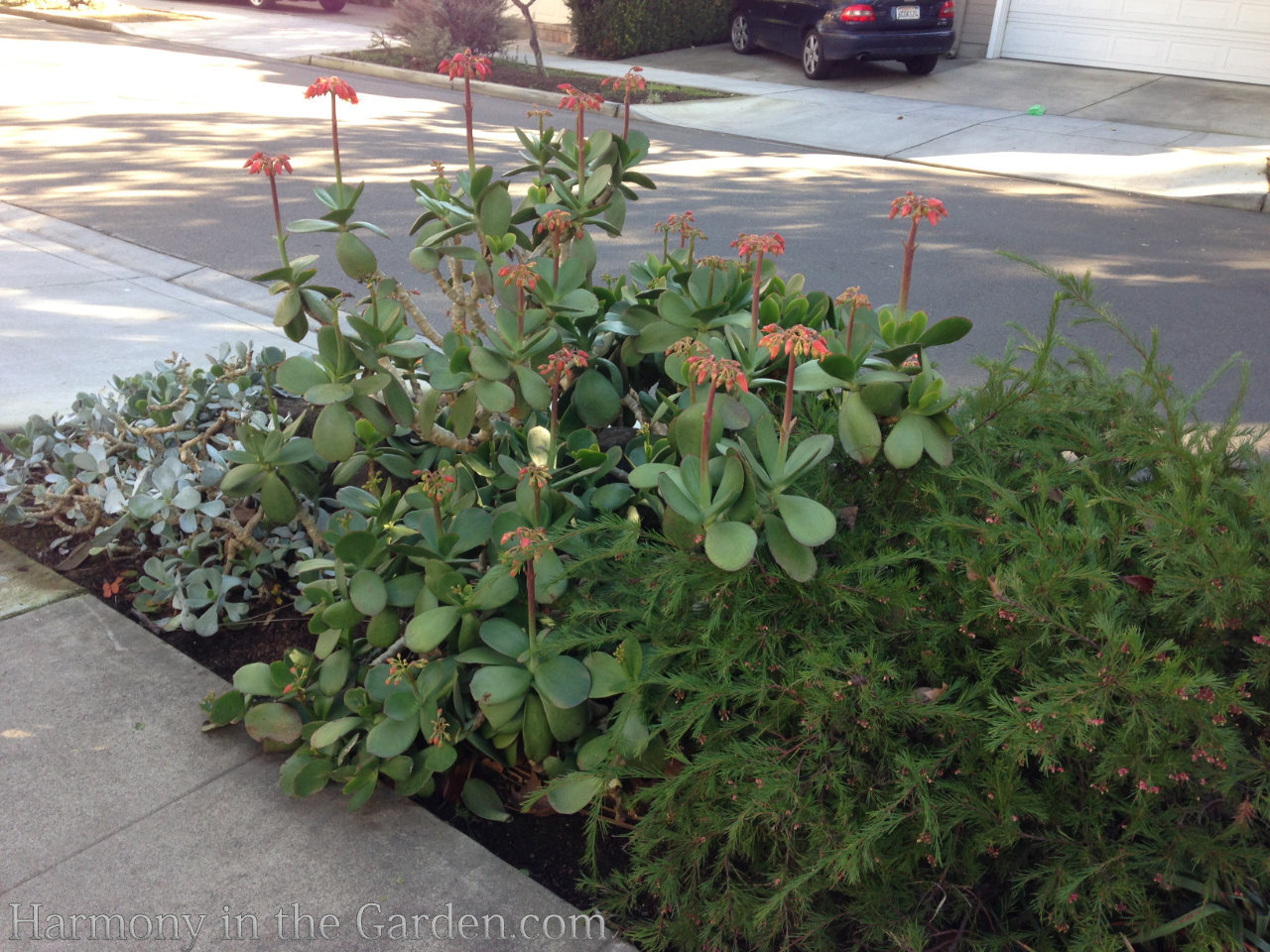
Before designing the hellstrip, you’ll need to consider how you’ll irrigate this area.
While it’s possible to run irrigation under the sidewalk, most gardeners don’t want to go through this effort, so they opt for hand-watering.
Hand-watering isn’t ideal (who wants to drag a hose all the way across the garden?), so if this is your method, choosing low-water plants is a must.
The next thing to do is to remove as much of the nutrient-depleted and compacted soil as possible. Then, amend the heck out of the area, adding as much good soil and compost as possible to give the new plants a fighting chance.

To create cohesion with the rest of your front garden, keep the overall style and feel of this space the same.
For example, if your garden’s style tends to be formal, why not add a boxwood knot garden in this area?
Boxwood can be an excellent planting choice as they’re compact, evergreen, low maintenance, and aren’t water-guzzlers.
If you fear the dreaded boxwood blight might hit and decimate your plants, I’ve had fantastic luck using Boxleaf Euonymus as an alternative (see pic, below.)


When choosing plants for this tricky area, repeat plants and colors that already exist throughout your front garden.
The ribbon of continuity that extends the entire length of your garden is what helps unify the hellstrip with the rest of your garden
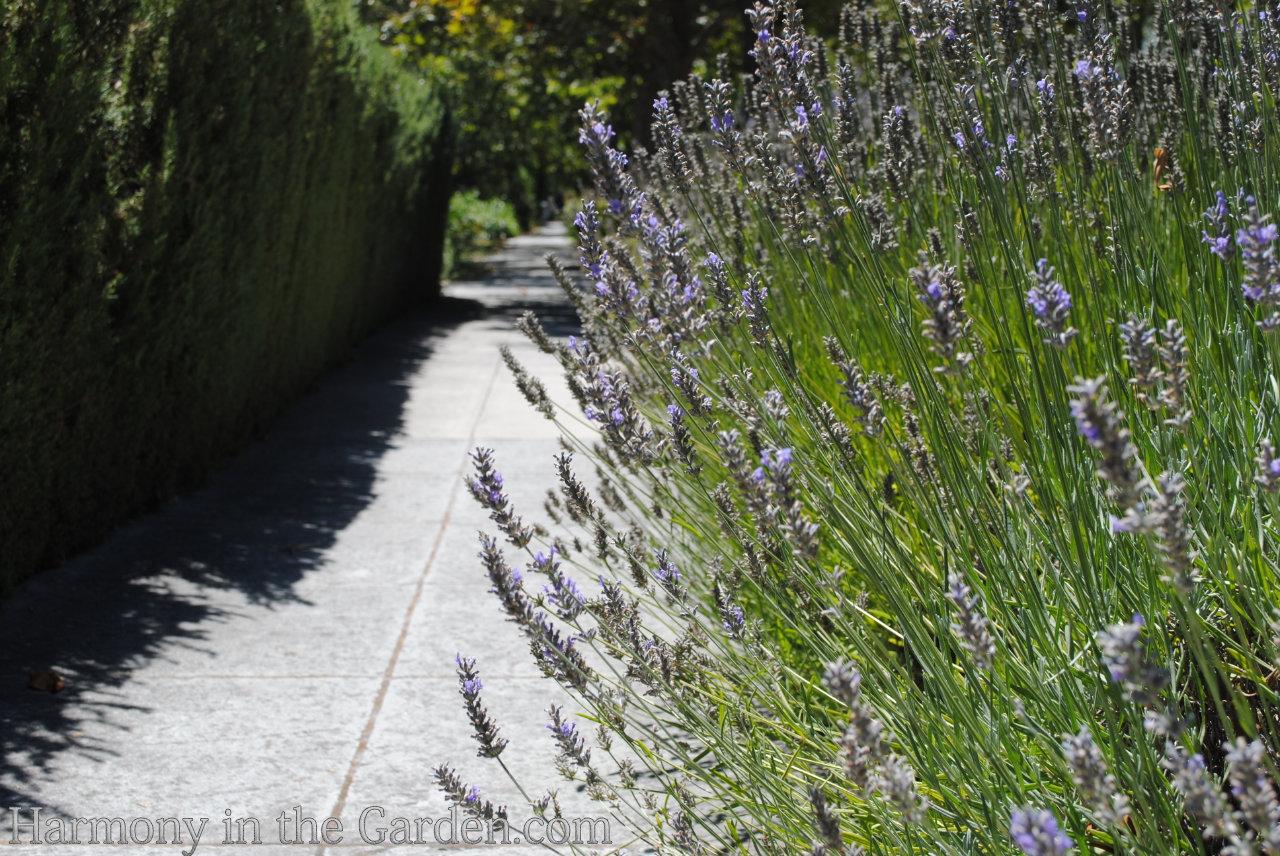
Remember to use leg-friendly plants when planting in this narrow strip – no thorns or bees, please!
No one wants to walk their dog and be stung by a bee or impaled by an overgrown rose or agave!
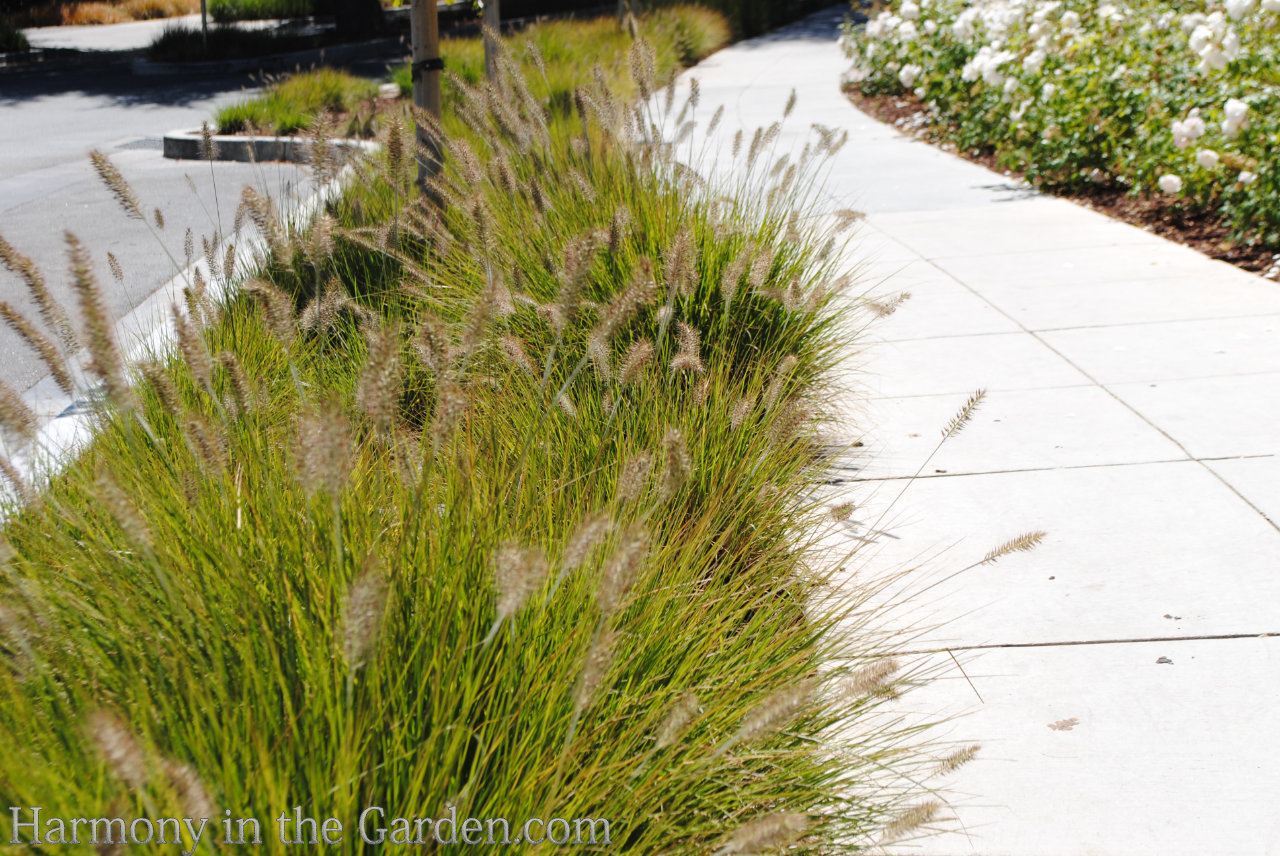
Instead, choose plants that will remain smaller and are soft if brushed against.
Examples might be smaller grasses such as melinis nerviglumis or pennisetum ‘Red Bunnytails,’ carex divulsa (and other varieties), heucheras, or low-growing perennials.

It’s also important to remember not to plant anything that will grow too tall.
As much as you may want to block the sight and sound of cars in the street, you don’t want to impede a pedestrian’s view of oncoming traffic.
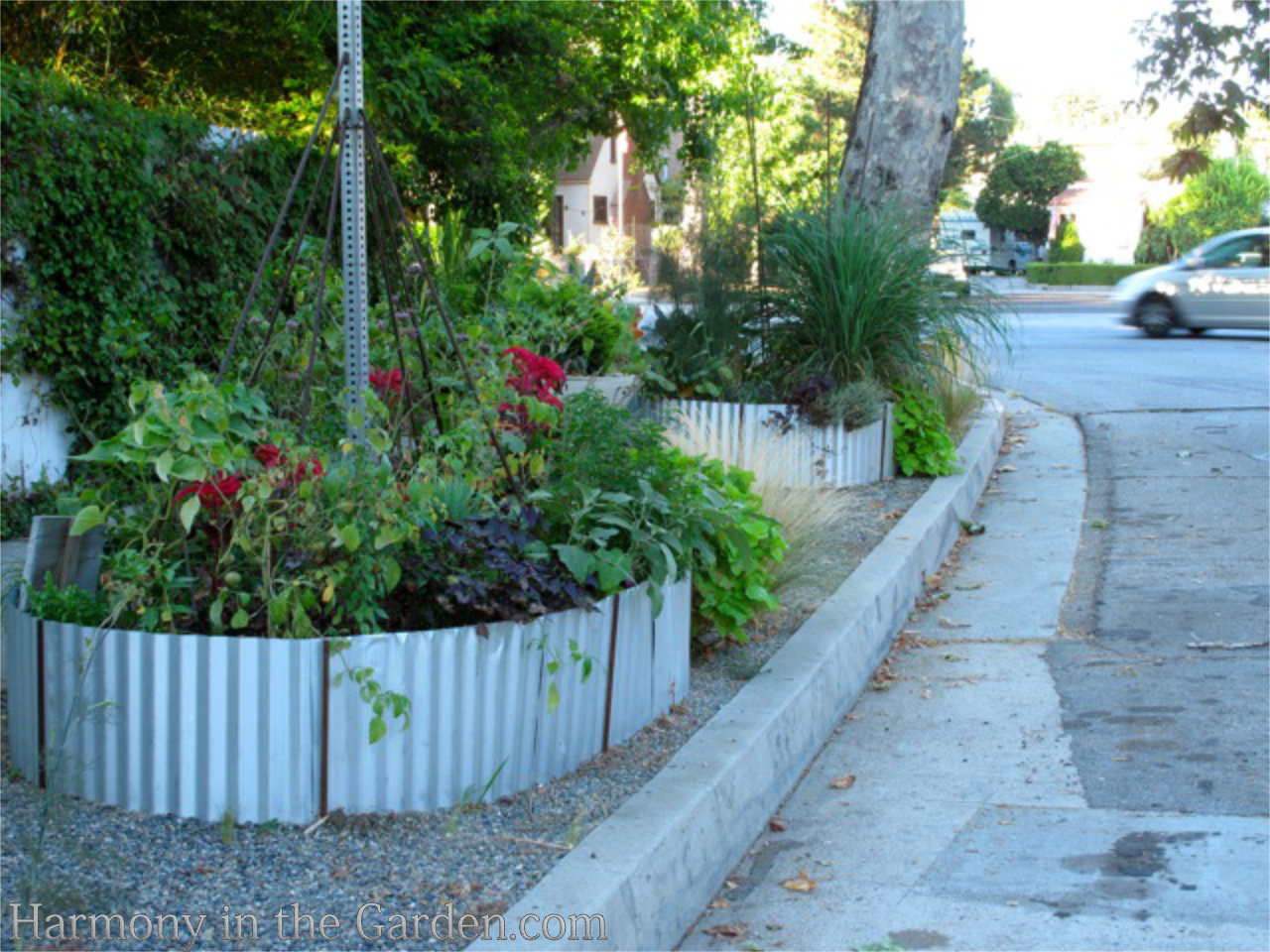
And don’t forget edibles!
Since this area generally has plenty of sun, why not take advantage of it and use plants that love the heat?
Edibles are a perfect choice, and while they may require as much water as a lawn, they give you SO much more.
Plus, passers-by will appreciate a little snack on their journey.
You can almost guarantee the public will sneak a tomato or two, but that’s okay since you will, too! 😉
Getting from Point A to Point B

Remember, you may need to create a path through the hellstrip, from the street to the sidewalk.
Believe me when I say that people will take the shortest route from Point A to Point B, which usually translates into tromping through your newly planted area.
The solution is simple – create a wide and stable pathway, and you won’t have this problem.

When creating the path, keep your garden’s overall design consistent by using the same materials on both sides of the sidewalk.
For example, if the path to your front door is flagstone, try and use the same flagstone in the hellstrip.
Don’t forget – a large section of cement sidewalk will bisect these two areas, so if you add a path with a different stone/color, it can quickly look disjointed.
Two hardscaping materials are plenty – don’t add a third!
And finally – a few more examples of inspiring hellstrips
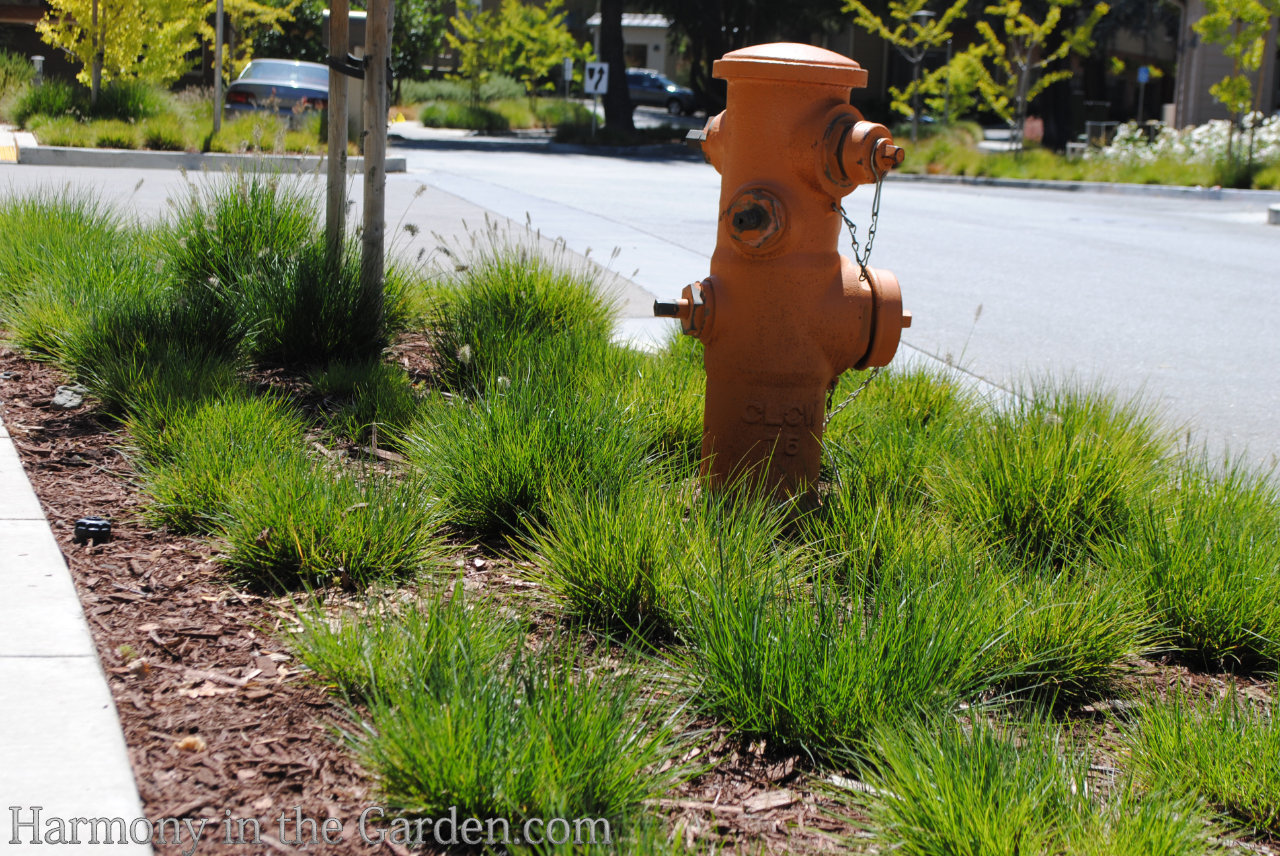
I love how the ornamental grasses soften this fire hydrant.
Much better than surrounding it with a traditional lawn that needs constant mowing!
(click here to read about my garden bed with its own bright yellow fire hydrant – ugh.)
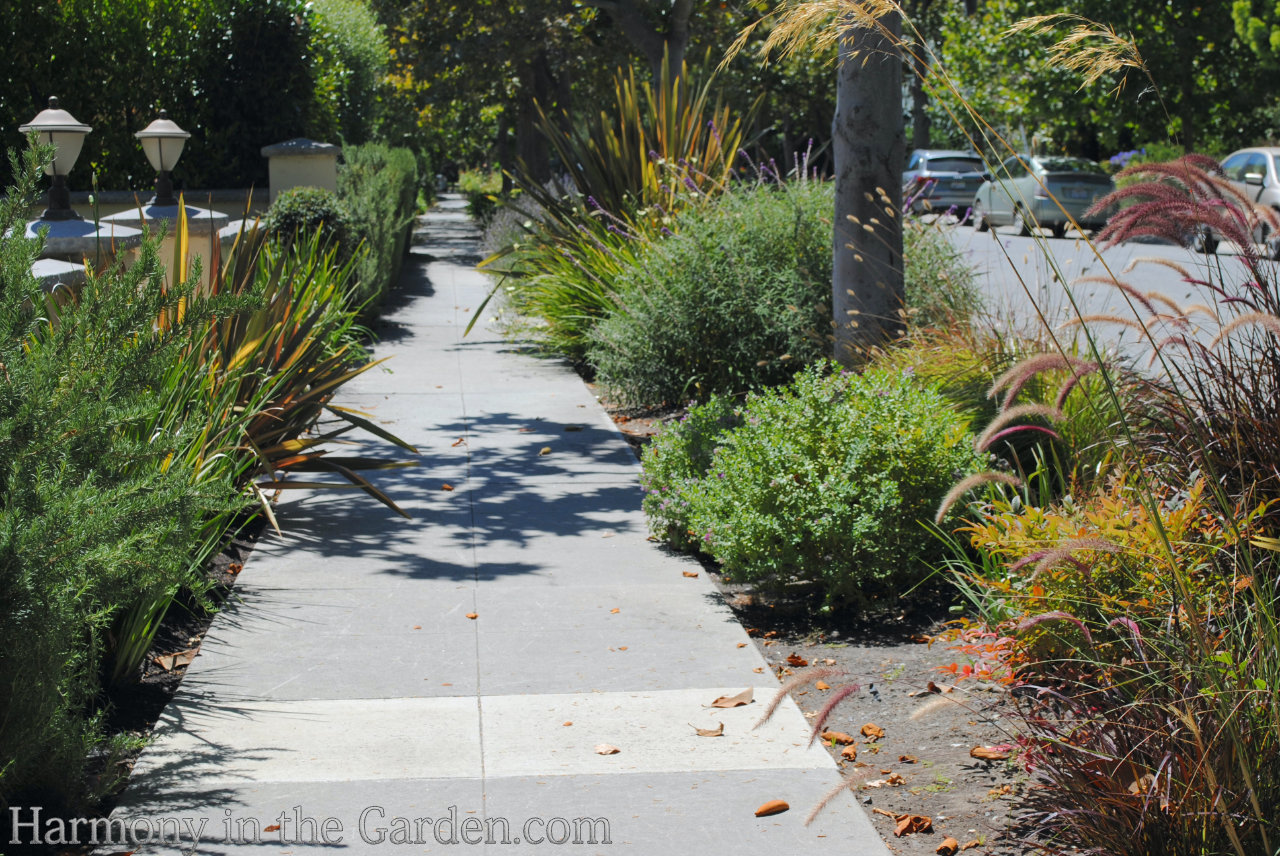
While this examples teeters on the edge of being a little too tall (blocking the view of traffic for pedestrians) it’s still beautiful.
Even the neighboring hellstrip uses some of the same plants, helping to add to the unifying repetition.


More gorgeous low-water grasses fill the hellstrip that surrounds this house.

Very low-water perennials and succulents thrive in this hellstrip that’s not only on a busy street, but also on a busy corner.


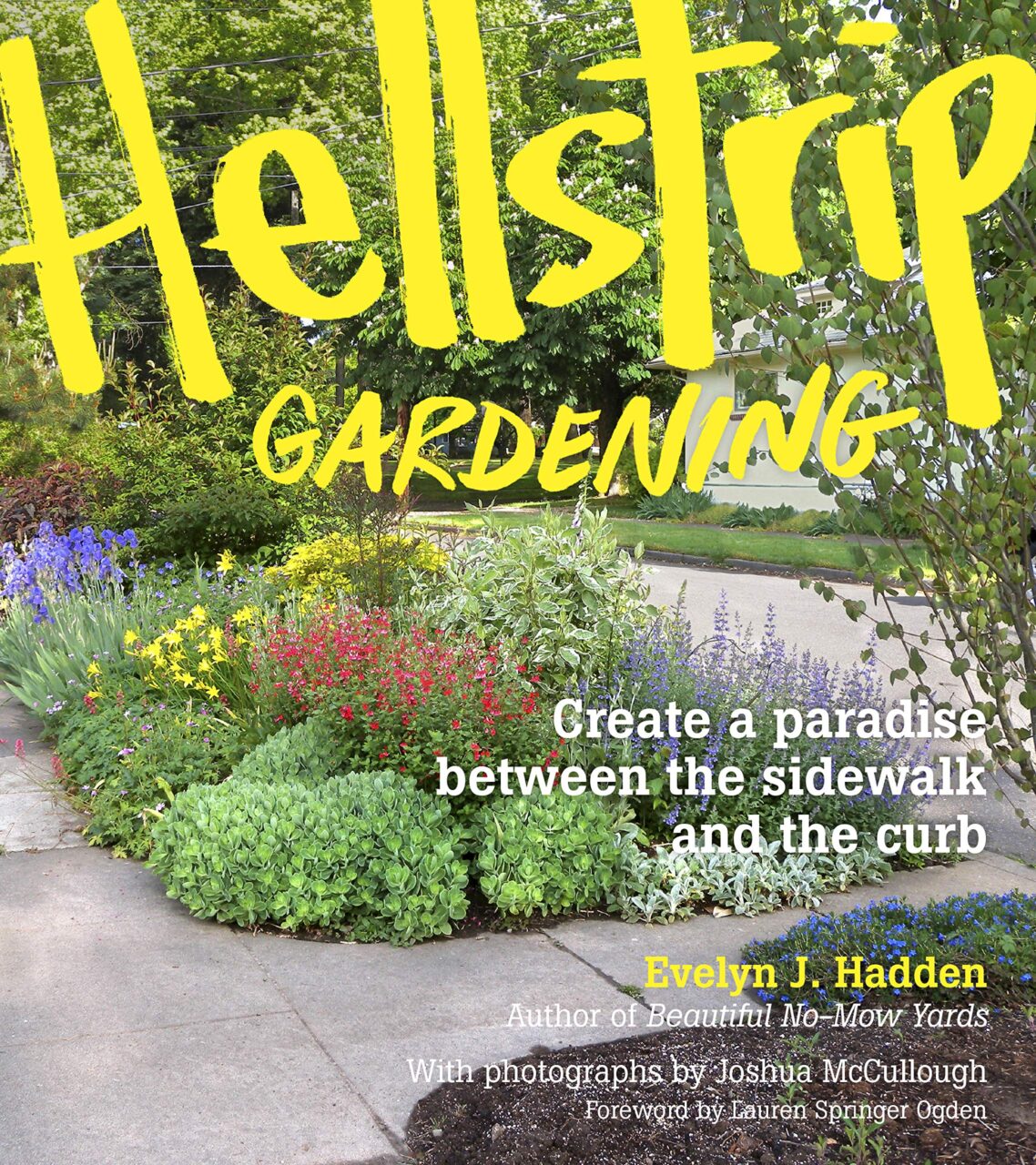
And finally, Lauren Springer Ogden (who first coined the term ‘hellstrip’) has co-authored Hellstrip Gardening, a fantastic book about all about hellstrips.






12 Comments
I live on Cape Cod and planted some beach grass very close to the road (no hellstrip, just yard, then street). I was worried the soil, although poor in quality and sandy (as our soil is here on the Cape), would still be too nutritious for the grass! But I was wrong. It’s growing beautifully and happily and throwing up new shoots regularly. We’ve had droughts most of the last eight years, but it doesn’t care.
Thanks so much for the info, Janet, it’s always nice to hear what works in other people’s gardens throughout the country!
These are a beautiful way to enhance our urban environments. We have a new addition to our neighbourhood of highrises.,..a multitude of resident dog owners who use these grassy strips as a dog run turning the grass into green and yellow polka-dotted patches or worse, have completely destroyed the grass. The selection of small ornamental grasses shown in one of your images might be a solution for our city planners.
Great suggestion, Gerry, as polka-dot lawns definitely aren’t ideal. Not to mention, depending on the type of ornamental grass used, it’ll most likely use much less water and less maintenance (ie: no mowing!)
Hi Rebecca!
I’ve never heard that strip called the “Hell Strip” or anything, really. I love it!
I had a funny incident related to your article that I thought I’d share with you about the Delta grass in my “Hell strip.”
Recently two adorable boys knocked on my door and offered to mow my strip of Delta grass for me. They were earning money for a fundraiser. I laughed and and said, “Oh no! Please don’t.” That gave me an opportunity to explain about the water saving feature of the deep roots and tall grass that keeps the soil moist. I love the other ideas you’ve shared. Thank you for keeping gardening and protecting the species and the water uppermost in our minds. And, all the beauty, too.
Love,
Carol
P.S. I gave them each some money for their cause and for knocking and asking first. And, I told them that I was proud of them wanting to work to earn money for their cause.
Hi Carol, how nice to hear from you! And I’m SO glad you reminded me of your own hellstrip (I just now included it in this post, as it’s such a beautiful one!) And what a lovely story, you’ve got such a kind heart. Those boys are lucky they met you. 🙂
Thankyou for letting readers know how invasive Mexican Feather Grass is!!!! I cringe driving along 280 and seeing it along the edge of the highway, especially near Belmont. You offer great alternative plant suggestions, as usual!
Thanks, Ronnie. Mexican Feather grass is so beautiful, but dang – it’s SO invasive!!! A few years ago I remember hearing that California nurseries were being asked to not carry it, which it seems they promptly ignored. Nor sure how or who asked them, but it seems like it’s still offered everywhere. 🙁
I appreciate the great info in the piece. I disagree with your suggestion about avoiding plants that attract bees though. I have a habitat garden and use primarily California native plants. I work hard to attract pollinators – including many of our native bees. There are over 1000 species of bees native to the state and my understanding is that none of them sting. It’s the European honey bee that can sting. I recommend Doug Tallamy’s books, which argue that the era of planting for aesthetics only is over. We can create beautiful AND ecological functional spaces and that’s what the world needs of us right now.
Hi Janny, I’m in no way saying not to include bees in your garden and, in fact, design and write a lot about pollinator gardens and native plants. I’m merely suggesting avoiding plants that attract stinging bees in narrow spaces as often times those plants end up outgrowing their space,and into the walking-zone, making it easy for people to get stung. My daughter is highly allergic to bees, and I had to learn to keep lavenders, etc. away from stepping stones, paths, etc unless I wanted to spend time in the emergency room – no fun! I also don’t plant bee-attracting plants near pools for this same reason. Nobody wants to swim and accidentally get stung by a poor bee in the water.
This was a wonderful article! Thank you!
You’re so welcome, Linda, I’m glad you enjoyed it!